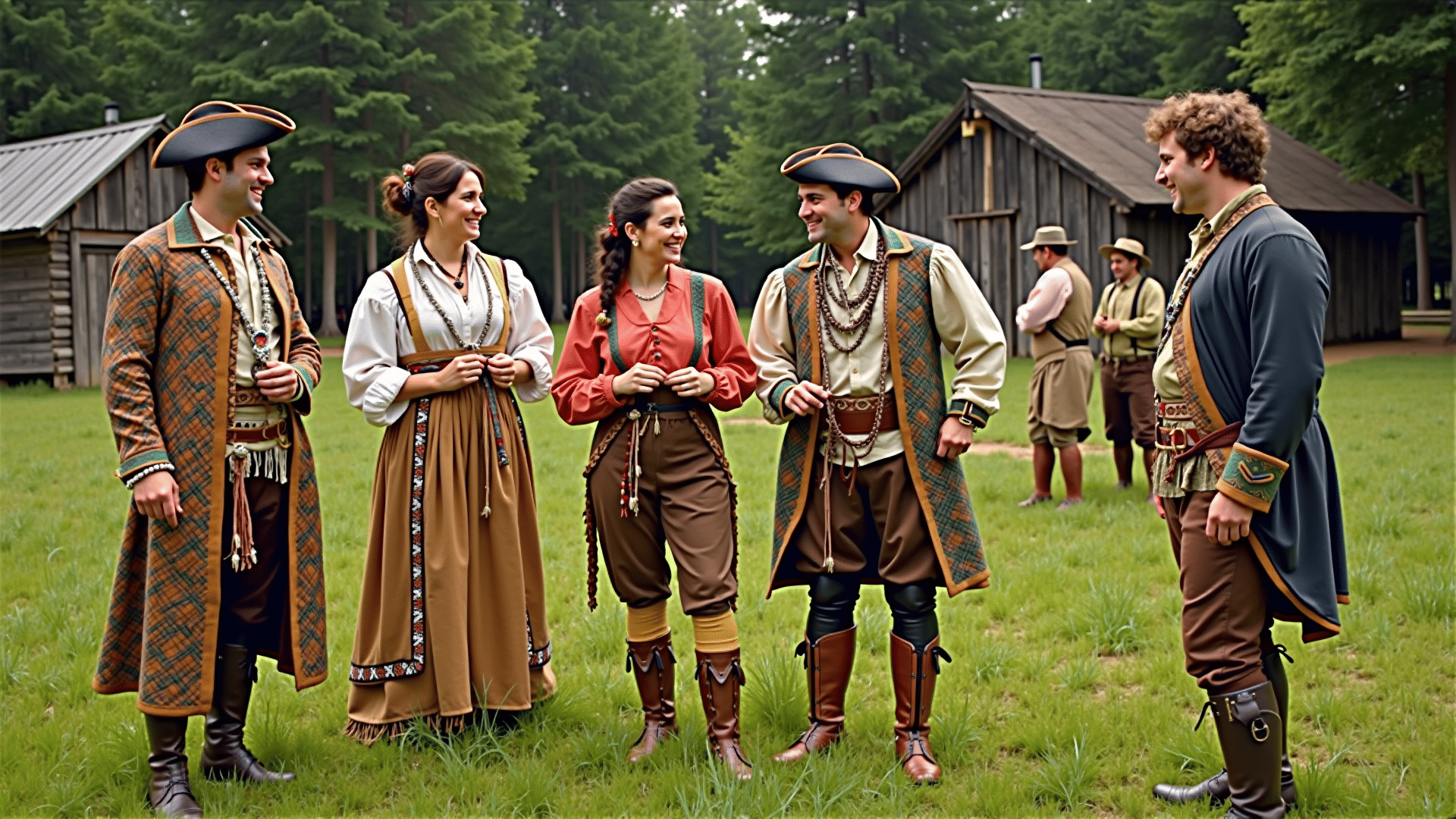The colonial era represents a fascinating period in the history of fashion, characterized by a fusion of European and Native American influences. This dynamic period saw settlers adapting their traditional European clothing to the new environment, while simultaneously drawing inspiration from the indigenous peoples they encountered. The result was a rich tapestry of style that was both practical for the New World and reflective of cultural exchange.
Upon arriving in the Americas, European settlers were initially clad in the fashions of their homeland. Men typically wore breeches and waistcoats, while women donned full skirts and bodices. These outfits were often made from heavy wools and linens, materials well-suited to the European climate but less practical in the diverse climates of the New World. As settlers adjusted to their new environment, practicality became a priority, and clothing began to evolve.
One of the most significant influences on colonial fashion was the indigenous peoples' adaptation to their environment. Native American tribes had long mastered the art of dressing for the varied climates across America. Their use of animal hides and furs was particularly influential, providing both warmth in cold climates and protection from the rain and snow. The settlers quickly recognized the practicality of these materials and began to incorporate them into their own attire, often trading with Native Americans for these highly valued resources.
The introduction of Native American elements into colonial clothing brought a distinctive style to the era. Leather moccasins replaced rigid European shoes, offering greater comfort and mobility. Fringed leather jackets and coats, inspired by Native American designs, became popular for their ability to provide warmth while allowing freedom of movement. Women, too, embraced these elements, adding Native American patterns and beadwork to their clothing, creating a blend of cultures evident in their attire.
Another notable adaptation was the use of lighter fabrics and modified clothing structures to accommodate the warmer climates found in many colonies. Linen, cotton, and other breathable materials became more common, and clothing designs were often simplified to suit the needs of a more active lifestyle. This practical approach to fashion was a departure from the more ornate and restrictive clothing worn in Europe.
Accessories of the colonial era also reflected this cultural convergence. Hats, which had always been a staple of European fashion, were adapted with brims suited for shielding from the American sun. Indigenous jewelry, such as wampum beads and shells, found their way into European-style accessories, adding a unique flair to the colonial wardrobe.
The colonial era's blending of European and Native American fashion elements created a style that was uniquely adaptive, practical, and symbolic of cultural exchange. This period in fashion history stands as a testament to the ingenuity and creativity of those who bridged two worlds in their daily lives. Their adaptations not only highlight the practicality required for survival in the New World but also the beauty of merging diverse cultural elements into something wholly distinctive.
